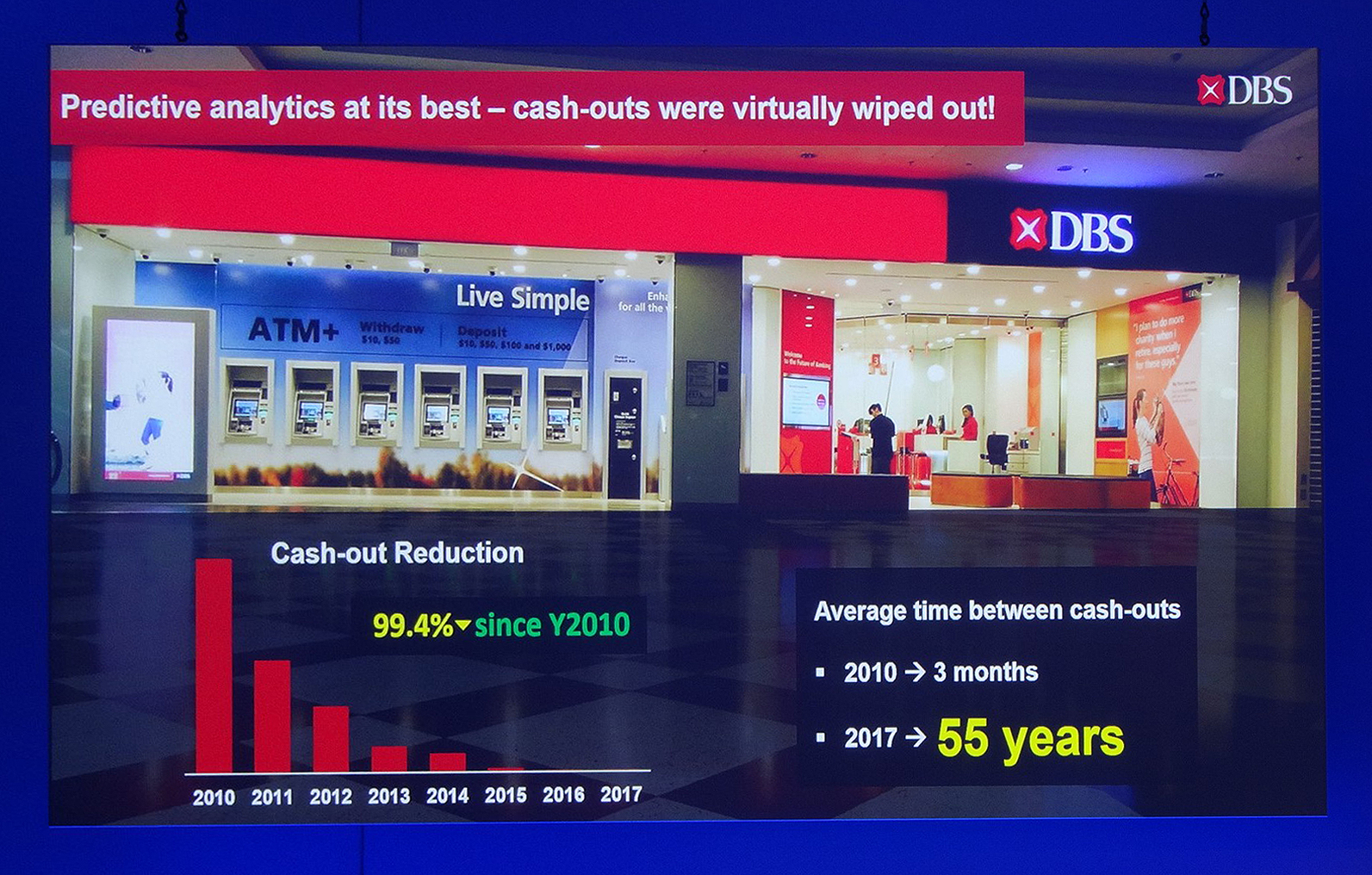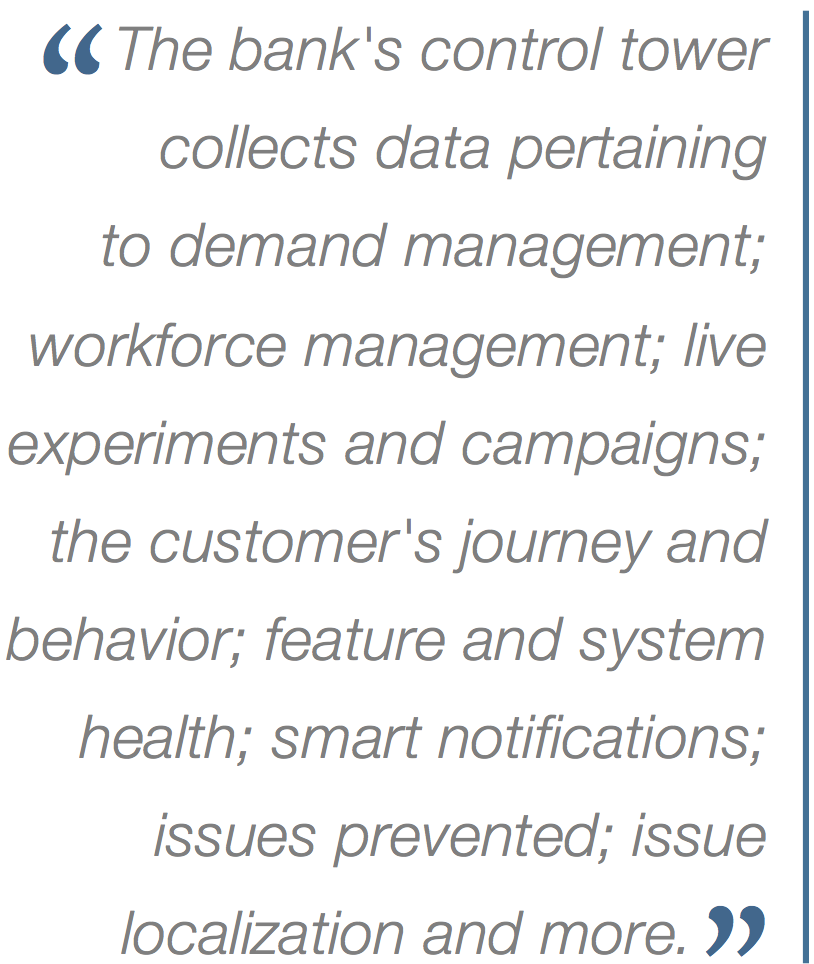Article
DBS Bank nets 1.8M mobile customers in 2 years
By helping customers to migrate from the teller window to self-service channels, DBS Bank was able to achieve a 19 percent reduction in over-the-counter cash transactions — and a 9 percent reduction in OTC noncash transactions — within just one year.

October 29, 2018 by Albert Kho of DBS Bank, left, responds to a question from moderator Martin Kloss., Elliot Maras — Editor, Kiosk Marketplace & Vending Times
Moving customers to automated transactions was a major theme of the recent Diebold Nixdorf International Management Seminar in Lisbon, Portugal. One bank that has made significant progress in this journey is DBS Bank, a Singapore-based financial institution that began its digital transformation in 2009.
Albert Kho, DBS managing director and head of Singapore consumer banking operations and regional self-service banking, said that the bank's journey started when a university survey returned very low customer service scores. The bank then identified the expansion of cashless transactions as a way to improve the customer experience.
In 2010 and 2011, the bank — which has 2.6 million monthly ATM users and 831 ATMs — developed instrumentation that enabled real-time tracking of activity at its ATMs, Kho said.
One issue that got especially close attention from the bank was unusual no-cash movement from its ATMs. The technology identified specific machines that required an immediate response.
 |
| DBS was able to eliminate virtually all ATM cash out incidents. |
By moving customers to bank teller machines, the bank was able to reduce over-the-counter cash transactions by 19 percent and OTC non-cash transactions by 9 percent in one year.
The bank teller machines enable withdrawals and deposits, cash exchanges, passbook updates and other services.
By using predictive analytics, the bank has virtually eliminated ATM cashouts, Kho said.
Cash out incidents have been reduced by 99.4 percent since 2010. The bank monitors customer response via social media, he said.
The bank has also introduced video teller machines in its branches to help customers migrate to digital services, offering token issuance and replacement, card issuance and replacement, changes to card settings, PIN reset, account closures, card blocking, bill payment, credit card payment and more.
To make self-service more user friendly, the company developed a human-centered design for its customer interface, including a redesign of its menu to be more intuitive. Kho presented a slide illustrating the redesigned menu screen, which allows the user to select "services," "fast cash" or "more services."
A mobile-only strategy emerges
In 2016, the bank took a major step in its automated journey when it introduced its mobile-only strategy, called "digibank by DBS," and began to track app use.
Within two years, 1.8 million account holders were using the mobile app, which enables a customer to open an account within 90 seconds, Kho said. The bank has carefully monitored data related to app use, since customers can encounter issues they might not have even known they were experiencing when they used the app.
Kho presented slides summarizing the technology the bank uses to monitor customer behavior in great detail.
 For instance, the bank's control tower collects data pertaining to demand management, workforce management, live experiments and campaigns, customer journey and behavior, feature and system health, smart notifications, issues prevented, issue localization and more.
For instance, the bank's control tower collects data pertaining to demand management, workforce management, live experiments and campaigns, customer journey and behavior, feature and system health, smart notifications, issues prevented, issue localization and more.
Business values identified include customer profitability, customer satisfaction, campaign optimization, workforce automation, preemptive issue resolution, real-time insights and competitive advantage.
One goal of the customer behavior analysis is to recreate the individual customer's journey and enable contextual servicing. DBS Bank is working to design its operating processes for instantaneous fulfillment and to create a unique and differentiated customer experience.
In addition to focusing on improving the customer experience through data analysis, the 26,000-employee company has also worked to improve its employee experience, Kho noted.
DBS bank — which has 5.1 million customers in Singapore, a country with a total population of 5.5 million — has 4 million ATM users, according to information Kho presented. Of these, 81 percent use the machines weekly, while 12 percent use them monthly, 5 percent use them daily and 1 percent use them rarely.
About Elliot Maras
Elliot Maras is the editor of Kiosk Marketplace and Vending Times. He brings three decades covering unattended retail and commercial foodservice.








